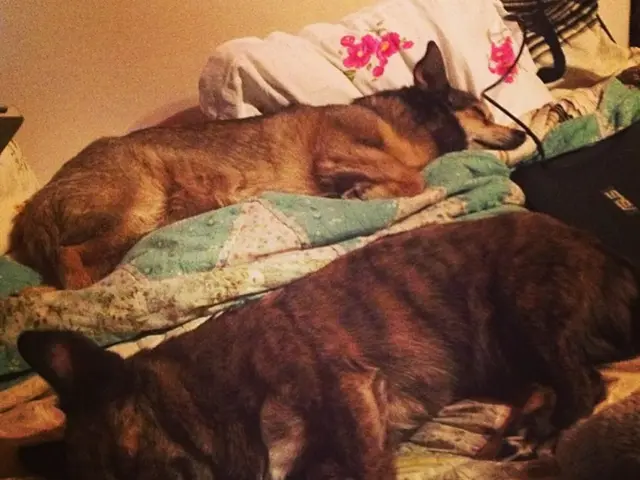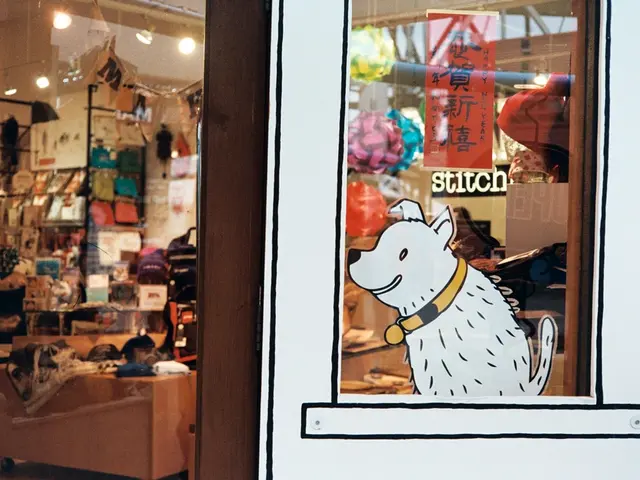Alternative Therapies for Pets: Exploring Traditional Chinese Medicine (TCM) Approaches
In Chengdu, the capital of Sichuan province, a veterinarian named Guo Mengxuan was faced with a challenging case: a paralyzed tabby cat named Fubao, whose other veterinarians had declared impossible to walk again. Guo, however, turned to a centuries-old practice in Chinese veterinary medicine - Traditional Chinese Veterinary Medicine (TCVM) - which has been used to treat animals for thousands of years.
The cat, suffering from a severe spinal cord injury and beyond the optimal window for surgery, was a difficult case. Doctors from other clinics had given up, but Guo, trained in both veterinary pharmaceuticals and TCVM, thought differently. She opted for acupuncture therapy.
Three times a week for about three months, Fubao received acupuncture treatments. Slowly, but steadily, the cat regained the ability to stand, walk, and even partially control its bladder and bowel functions.
Surprisingly, Fubao's recovery is not an isolated case. With the growing popularity of TCVM in China, an increasing number of pet owners are turning to this practice when regular treatments fail. Guo works at Loving Care International Pet Hospital, where TCVM treatments account for approximately one-tenth of their cases.
TCVM, paralleling Traditional Chinese Medicine (TCM) for humans, dates back over 2,000 years. It focuses on balancing the body's qi, or life energy, to restore internal equilibrium. Observable symptoms, such as a pet's skin, fur, tongue, breath, and pulse, are taken into account during TCVM consultations.
Paralysis cases aren't uncommon amongst certain breeds, such as French bulldogs, which are prone to intervertebral disc disease. In such instances, where conventional veterinary treatments have limited success, TCVM can offer hope for recovery.
Hu Yusheng, an associate professor at China Agricultural University's college of veterinary medicine, believes TCVM treatments, including acupuncture, herbal medicines, and massages, can play an increasingly important role in treating congenital abnormalities and other ailments.
With Chinese pet ownership on the rise and pets living longer lives, thanks to advancements in diets, lifestyles, and veterinary care, TCVM offers valuable solutions for maintaining pets' quality of life in their senior years. Sometimes, even treating pets with advanced-stage cancer, where conventional treatments like surgery or chemotherapy pose risks, TCVM can provide relief.
By promoting balance within the animal's body and its environment, TCVM offers a win-win solution rather than merely suppressing symptoms. This approach is gaining recognition not just within China, but overseas as well, highlighting the promise and potential of this ancient practice in modern veterinary care.
Tags: China, Medicine, Treatment, Pets, Traditional Chinese Medicine
- The popularity of Traditional Chinese Veterinary Medicine (TCVM) in China has led an increasing number of pet owners to seek this practice when regular treatments fail, as seen in the case of a paralyzed tabby cat named Fubao in Chengdu.
- TCVM focuses on balancing the body's qi, or life energy, to restore internal equilibrium, similar to Traditional Chinese Medicine (TCM) for humans, which dates back over 2,000 years.
- In cases where conventional veterinary treatments have limited success, such as intervertebral disc disease in certain breeds like French bulldogs, TCVM can offer hope for recovery, as demonstrated by Fubao's gradual regaining of mobility after acupuncture treatments.
- Associate Professor Hu Yusheng from China Agricultural University's college of veterinary medicine believes that TCVM treatments, including acupuncture, herbal medicines, and massages, can play an increasingly important role in treating congenital abnormalities and other ailments in pets.
- As Chinese pet ownership continues to rise and pets live longer lives due to advancements in diets, lifestyles, and veterinary care, TCVM offers valuable solutions for maintaining pets' quality of life in their senior years.
- In cases where conventional treatments like surgery or chemotherapy pose risks, TCVM can provide relief, even for pets with advanced-stage cancer, offering a win-win solution rather than merely suppressing symptoms.
- The recognition of TCVM is not limited to China, but it is gaining recognition worldwide, highlighting the promise and potential of this ancient practice in modern veterinary care, especially in areas such as health-and-wellness, mental-health, nutrition, fitness-and-exercise, and lifestyle.








